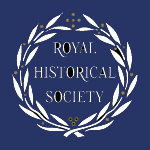I have compiled a set of notes for Napoleon on St Helena. This list comprises historical figures, subjects and events that I found useful in developing my understanding of The Atlantic World of Napoleon Bonaparte.
Click on the relevant letter of the Alphabet or Search for a specific name. For information on the regiments search under ‘R’.
There are currently 5 names in this directory beginning with the letter R.
Reade
Sir Thomas. Deputy Adjutant-General at St Helena. Sailed with Lowe to take up his post. Performed his duties with zeal and energy. Also appointed Inspector of Police. Was present at Napoleon’s post-mortem. Was suspected of being a spy. Appointed Consul-General in Tunis. Died 12849.
Reardon
Rodolphuis, Lieut., 66th Foot. 1790-1847. Born in Tipperary. Entered the Army via the West India Regiment and later transferred to the 71st Foot. Landed in Portugal in 1808 and fought at Corunna and Vimiera. Transferred to the 66th in 1810 for service at St Helena. Sent home in October 1818 following a row with the Governor involving O’Meara. Appointed Barrack Master at Drogheda in 1841.
Regiments
20th, (East Devonshire) Regt. of Foot, formed 1688. Fought at the battles of Alexandria, in Portugal and the Peninsular, Vimeiro, Corunna nd Vitoria.
43rd, (Monmouthshire) Regt. of Foot, formed 1741. Re-mustered as light infantry under the command of Sir John Moore and fought at Talavera, Bussaco, Salamanca and in the Light Division under Robert Crauford at the assault on the fortress of Badajoz (1812) where the Regiment lost 20 officers and 335 riflemen. Served in the War of 1812 at New Orleans (1814).
44th, (East Essex) Regt. of Foot, ‘The Pompadours’, formed 1741. Fought in the ’45 at Prestonpans; in Boston (1775) and Brandywine (1777) and in the War of 1812 at Bladenburg, North Point and New Orleans. The Regiment’s 2nd Battalion served at the siege of Ciudad Rodrigo, Badajoz and at Salamanca in 1812 captured the Imperial Eagle of the French 62nd Regiment. Fought at Quatre Bras and Waterloo in June 1815.
66th, (Berkshire) Regt. of Foot, formed 1756. In 1804 the First Battalion was swerving in Ceylon whilst the Second Battalion fought at the Crossing of the Duoro and at Talavera, Bussaco, Albufera (1811) and Badajoz. At the latter it suffered very heavy casualties and for the remainder of the war formed a composite battalion. In 1817, the battalion wa sent to St Helena where it was amalgamated with the First Battalion from Ceylon.
71st, (Highland) Regt. of Foot, formed 1777. Served in India; at the Cape of Good Hope and at the Battle of Blaauberg in 1806. Served in Sir Home Popham’s expedition to South America in 1806 where the Regimental colours were captured when the whole force surrendered to the Cabildo in Buenos Aires. Served throughout the Peninsular.
88th, Regt. of Foot, (Connaught Rangers), formed 1793 in response to the threat of invasion by the French. Known as “The Devil’s Own”. Left Falmouth in 1806 for South America and served in Sir Home Popham’s expedition to South America where it was captured at the surrender of Sir John Whitelocke’s force in Buenos Aires.
95th, Regt of Foot (Rifles), formed 1800 by Sir John Moore at Shorncliffe Barracks in Kent as “an experimental corps of riflemen”, the 95th was armed with Baker rifles. They served in South America under the command of Robert Crauford where they suffered heavy casualties and were captured in the surrender of Sir John Whitelocke’s force at Buenos Aires in 1807. Served with distinction throughout the Peninsular War at Rolica, Corunna and at the siege of Cuidad Rodrigo. Three battalions served at Waterloo in 1815 and particularly distinguished themselves at the defence of Le Haye Sainte throughout the battle.
PS.
The first corps of British Riflemen was formed to operate with the new rifle, which had far greater accuracy that the old smooth bore musket. Clothed in bottle-green uniforms to give protective cover, these new sharpshooters were taught mobility and concealment and were encouraged to use their own initiative. This training gave the Regiment an ethic it never lost. “The fighting, thinking soldier: A corps not of automata acting en masse but of alert, intelligent, adventurous and quick moving individual marksmen, trained to act independently but with a common purpose. The Rifle Brigade made comradeship between all ranks the foundation for its achievements and the hallmark of the rifleman has always been adaptability, good humour and cheerfulness in any adversity. The Regiment had no colours but each rifleman wore a silver badge in the shape of a bugle horn as a mark of their membership of this elite body of men.
Rising Star
The Rising Star was designed and built in London by Lord Thomas Cochrane for use in the Pacific against the Spanish Navy. It was a steamship with twin boilers and a paddle wheel. Cochrane had hoped to sail in her to Chile but the vessel was not built in time and followed later.
Ross
Robert, Major-General. 1766-1814. Born in Ireland and commissioned into the 25th (Sussex) Regt. Served at the Battle of Alexandria in 1801 and was appointed to command the 20th (East Devonshire) Regt in 1803. Fought at Corunna and in Spain where he was severely wounded at the Battle of Orthez in early 1814. Ross was appointed to command British troops in America and fought at the Battle of Bladenburg in August and in the attack on Washington when public buildings, including the Navy Yard, Capitol Hill and the White House were destroyed. Ross was persuaded against his will to attack Baltimore and was shot by snipers at North Point 12 miles outside the city. His body was removed to Canada in a barrel of rum for burial.

